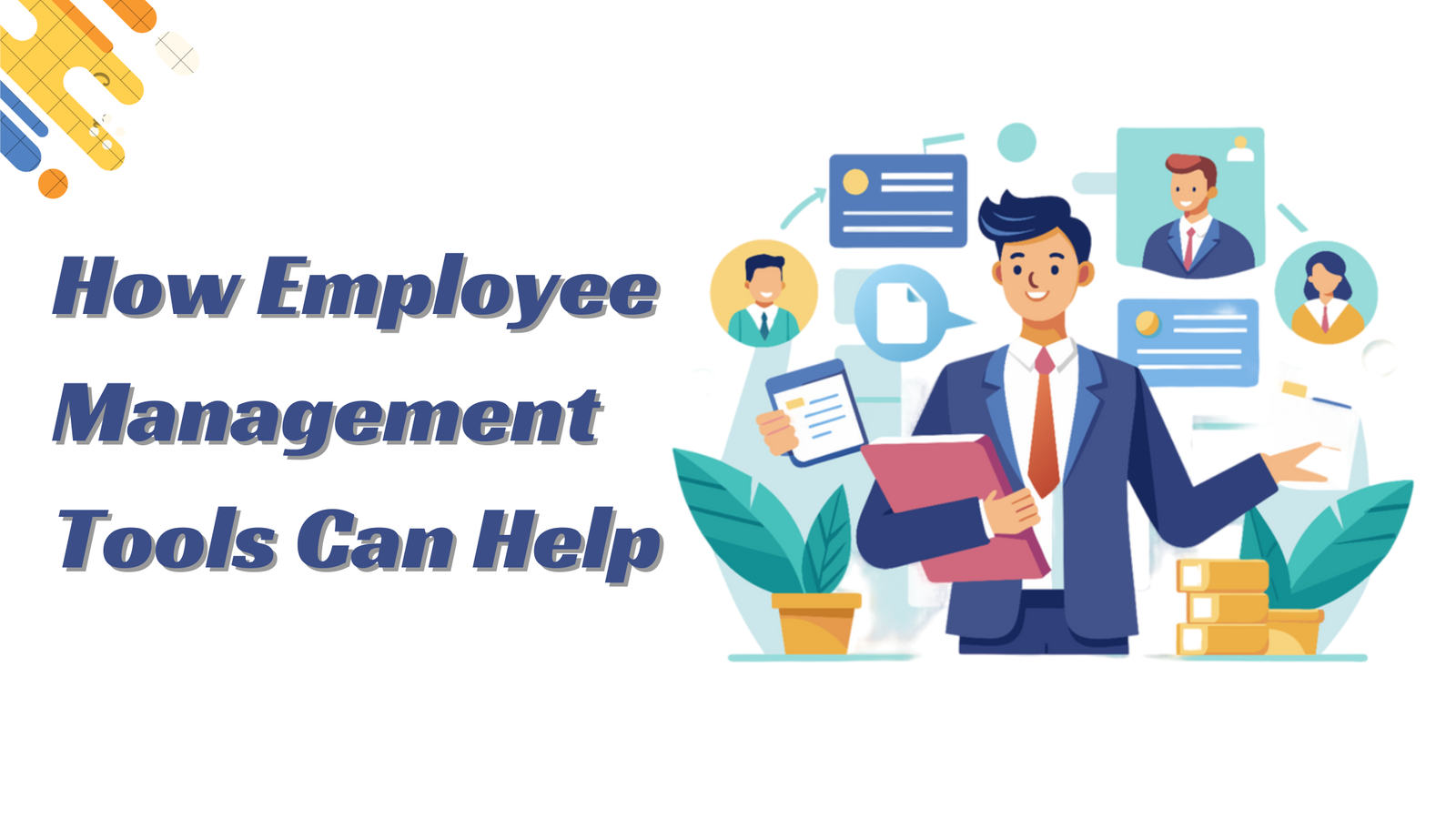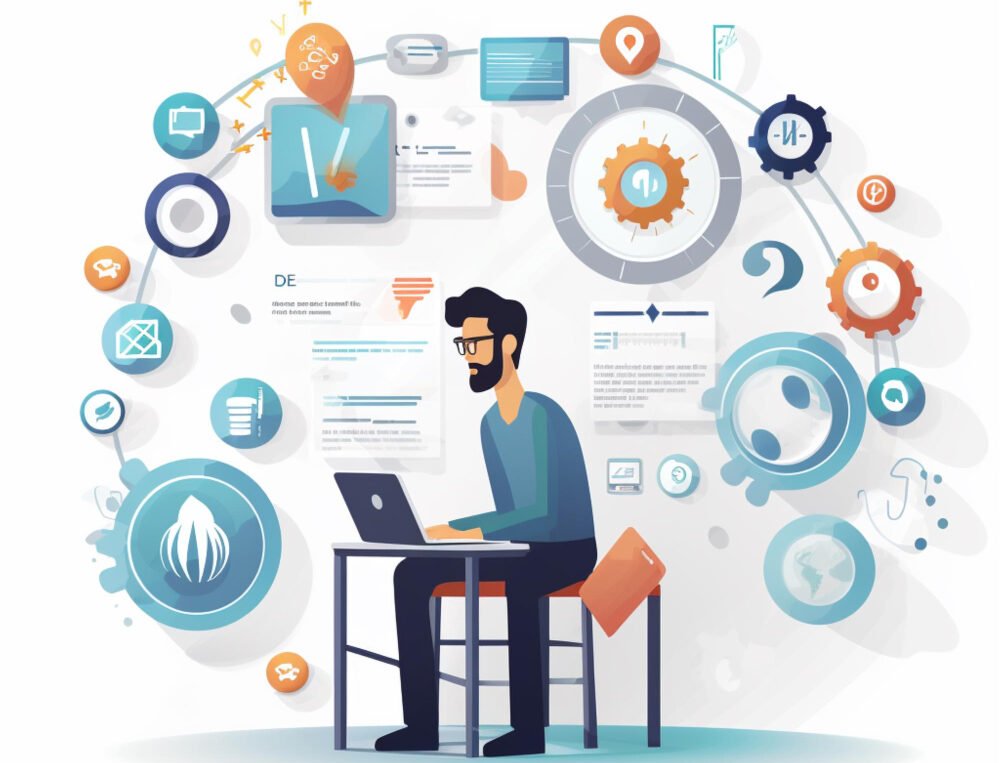Navigating Remote Work Challenges: How Employee Management Tools Can Help
- 1 Importance of Effective Employee Management
- 1.1 1. Enhanced Productivity and Performance
- 1.2 2. Employee Retention and Talent Acquisition
- 1.3 3. Innovation and Creativity
- 1.4 4. Customer Satisfaction and Loyalty
- 1.5 5. Mitigation of Risks and Challenges
- 2 Role of Remote Management Tools
- 2.1 1. Facilitating Communication and Collaboration
- 2.2 2. Ensuring Accessibility and Flexibility
- 2.3 3. Enhancing Productivity and Accountability
- 2.4 4. Ensuring Security and Data Protection
- 2.5 5. Fostering Employee Engagement and Well-being
- 3 Key Features of Remote Management Tools
Remote work has become more prevalent than ever before. The advent of technology has empowered organizations to transcend geographical barriers and embrace remote work models. While this shift offers numerous benefits, it presents a unique set of challenges for employers and employees. However, these challenges can be effectively addressed with the right tools and strategies, paving the way for a seamless remote work experience. This article explores the role of a remote employee management tool in facilitating efficient remote work environments.
Importance of Effective Employee Management
Effective employee management is essential for maximizing the potential of remote teams and ensuring that organizational goals are met. Managers must establish clear expectations, provide adequate support, and foster a culture of trust and accountability. Moreover, they must monitor employee performance, track project progress, and promptly address any issues or concerns. Without proper management, remote teams may struggle to stay aligned and motivated, jeopardizing the success of remote work initiatives.
1. Enhanced Productivity and Performance
Effective employee management’s core lies in the ability to optimize productivity and performance. When employees feel valued, supported, and appropriately challenged, they are more likely to be engaged and motivated. Engaged employees are more productive and tend to go above and beyond in their tasks, driving higher levels of performance and quality output.
By implementing strategies such as precise goal setting, regular feedback, and recognition programs, managers can create an environment where employees feel empowered to excel. Moreover, providing opportunities for skill development and career advancement fosters a culture of continuous improvement, further boosting productivity and performance across the organization.
2. Employee Retention and Talent Acquisition
Effective employee management is instrumental in retaining top talent and attracting new skilled professionals. In today’s competitive job market, employees are more inclined to stay with companies that prioritize their well-being, offer growth opportunities, and foster a positive work culture.
Managers prioritizing employee development, providing meaningful recognition, and ensuring a healthy work-life balance are likelier to retain their workforce. This reduces turnover costs and contributes to the stability and consistency of operations.
Furthermore, a strong reputation for employee management can serve as a magnet for top talent seeking employment opportunities. Candidates are drawn to organizations known for their supportive leadership, career advancement prospects, and inclusive work environment, enabling companies to attract and recruit the best candidates in the industry.
3. Innovation and Creativity
Creativity and innovation thrive in environments where employees feel empowered to voice their ideas, take calculated risks, and collaborate across teams. Effective employee management fosters a culture of innovation by encouraging open communication, embracing diverse perspectives, and rewarding creative thinking.
Managers are crucial in creating psychological safety within teams, where individuals feel comfortable expressing their opinions and experimenting with new approaches. By nurturing a culture that values innovation, organizations can stay ahead of the curve, adapt to changing market demands, and drive sustainable growth.
4. Customer Satisfaction and Loyalty
Employees are the face of the organization, directly influencing customer interactions and perceptions of the brand. Effective employee management ensures that frontline staff have the skills, knowledge, and motivation to deliver exceptional customer experiences.
When employees feel supported and valued, they are likelier to demonstrate empathy, problem-solving abilities, and a genuine desire to exceed customer expectations. Positive interactions with customers not only enhance satisfaction levels but also foster loyalty and advocacy, driving repeat business and positive word-of-mouth referrals.
5. Mitigation of Risks and Challenges
Organizations face various risks and challenges in today’s complex business environment, ranging from compliance issues to operational disruptions. Effective employee management involves equipping employees with the necessary training, resources, and support to navigate these challenges effectively.
Well-trained and engaged employees are better equipped to identify potential risks, adhere to regulatory requirements, and respond proactively to unforeseen circumstances. Moreover, a cohesive team led by capable managers can mitigate conflicts, address performance issues, and maintain stability during times of uncertainty.
Role of Remote Management Tools
Remote management tools play a pivotal role in overcoming the challenges associated with remote work. These software solutions are designed to streamline various aspects of workforce management, including communication, collaboration, performance tracking, and task management. By leveraging these tools, organizations can enhance transparency, facilitate real-time collaboration, and empower employees to work more efficiently from anywhere in the world.
1. Facilitating Communication and Collaboration
Remote management tools are the backbone of communication and collaboration in distributed teams. These tools provide various channels for real-time communication, including instant messaging, video conferencing, and virtual collaboration platforms.
Instant messaging platforms like Slack, Microsoft Teams, or Discord enable seamless communication, allowing team members to exchange messages, share files, and collaborate on projects regardless of geographical location. Video conferencing tools such as Zoom, Skype, or Google Meet facilitate face-to-face interactions, fostering a sense of connection and camaraderie among remote team members.
Moreover, virtual collaboration platforms like Asana, Trello, or Monday.com empower teams to organize tasks, track progress, and manage workflows efficiently. By centralizing communication and project management, remote management tools streamline collaboration, enhance transparency, and promote accountability in virtual work environments.
2. Ensuring Accessibility and Flexibility
Remote management tools are crucial in ensuring accessibility and flexibility for remote workers. Cloud-based solutions allow team members to access essential resources, documents, and applications from anywhere with an internet connection. This flexibility empowers employees to work remotely without compromising productivity or performance.
Furthermore, remote management tools often offer mobile applications, enabling employees to stay connected and productive while on the go. Whether working from home, a coffee shop, or a co-working space, remote workers can leverage these tools to collaborate with colleagues, attend virtual meetings, and complete tasks efficiently.
By providing seamless access to resources and tools, remote management solutions enable organizations to embrace flexible work arrangements, attract top talent, and accommodate diverse work preferences and lifestyles.
3. Enhancing Productivity and Accountability
Remote management tools are instrumental in enhancing productivity and accountability in distributed teams. These tools offer task tracking, time management, and performance analytics, allowing managers to monitor progress, identify bottlenecks, and optimize workflows effectively.
Project management platforms enable teams to break down tasks, set deadlines, and allocate resources efficiently. Remote management tools help teams prioritize tasks, stay organized, and meet deadlines consistently by visualizing project timelines and dependencies.
Time tracking and productivity monitoring features provide insights into employee activities and performance, enabling managers to identify areas for improvement and provide targeted support and guidance. Moreover, remote management tools promote a culture of trust and collaboration among team members by fostering transparency and accountability.
4. Ensuring Security and Data Protection
In the era of remote work, cybersecurity, and data protection are paramount concerns for organizations. Remote management tools are crucial in ensuring the security and integrity of sensitive information in virtual environments.
Many remote management solutions offer robust security features, such as end-to-end encryption, multi-factor authentication, and access controls, to safeguard data against unauthorized access and cyber threats. Moreover, cloud-based solutions often adhere to industry standards and compliance regulations, providing organizations with peace of mind regarding data privacy and security.
By adopting secure remote management tools, organizations can mitigate the risks associated with remote work, protect sensitive information, and maintain regulatory compliance in virtual environments.
5. Fostering Employee Engagement and Well-being
Practical remote management tools contribute to employee engagement and well-being by facilitating seamless communication, collaboration, and work-life balance. Virtual team-building activities, social channels, and wellness initiatives can be integrated into these platforms to foster a sense of community and support among remote employees.
Moreover, remote management tools enable managers to stay connected with their teams, provide feedback, and offer support in real time. By promoting open communication and regular check-ins, managers can address concerns, celebrate achievements, and ensure remote employees feel valued and supported.
Additionally, by providing flexibility and autonomy, remote management tools empower employees to manage their workload and schedule in a way that aligns with their personal and professional responsibilities. This autonomy contributes to higher job satisfaction, reduced stress, and improved work-life balance among remote workers.
Key Features of Remote Management Tools
Remote management tools typically offer a wide range of features and functionalities tailored to the needs of remote teams. Some of the key features include:
Communication Channels: Built-in chat, video conferencing, and messaging capabilities enable seamless communication among team members, fostering collaboration and reducing reliance on email.
Task Assignment and Tracking: Managers can assign tasks, set deadlines, and track progress in real time, ensuring that projects stay on schedule and within budget.
Performance Evaluation: Performance metrics and KPIs allow managers to objectively assess employee performance, identify improvement areas, and provide constructive feedback.
Document Sharing and Collaboration: Centralized repositories for documents and files enable easy sharing, editing, and collaboration, promoting efficiency and knowledge sharing among remote teams.
Time Tracking and Attendance Management: Automated time tracking and attendance management features help monitor employee work hours accurately and ensure compliance with company policies.
Best Practices for Implementing Employee Management Tools
While employee management tools offer immense benefits, successful implementation requires careful planning and execution. To maximize their effectiveness, organizations should consider the following best practices:
Define Clear Objectives: Clearly define the objectives and goals of implementing employee management tools, ensuring alignment with organizational priorities and values.
Provide Comprehensive Training: Offer comprehensive training and support to employees to familiarize them with the features and functionalities of the chosen tools and empower them to use them effectively.
Encourage Adoption: Encourage widespread adoption of employee management tools by highlighting their benefits, soliciting user feedback, and addressing any concerns or resistance.
Monitor Usage and Performance: Continuously monitor usage metrics and performance indicators to identify improvement areas and optimize employee management tools over time.
Remote work presents both opportunities and challenges for organizations seeking to adapt to the evolving landscape of the modern workplace. By effectively leveraging a remote employee management tool, businesses can overcome common challenges associated with remote work, enhance communication and collaboration, and empower their remote teams to thrive.


















